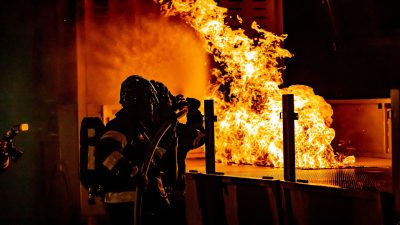How The Unpredictable Fury Devastated North America And Shook Maritime Safety Forever
1. The Great Lakes Storm of 1913: The Devastation That Swept Across North America
The Great Lakes Storm of 1913, often referred to as the “Big Blow” or the “Freshwater Fury,” stands as one of the most deadly and destructive storms in the history of the United States and Canada. This storm, which ravaged the Great Lakes region, remains an unforgettable event due to its fierce winds, frigid temperatures, and the sheer scale of devastation it caused. What made this storm particularly notable was not just the physical destruction, but the profound impact it had on maritime history and the future of disaster preparedness.
The storm began in early November 1913, catching both the public and the authorities by surprise. At the time, meteorology was still in its infancy, and the ability to track and predict such massive storms was virtually non-existent. With minimal warning, the storm rapidly escalated into a natural disaster of catastrophic proportions, leading to significant loss of life, severe damage to ships, and the near-total destruction of entire communities along the Great Lakes.
The storm’s powerful impact was amplified by the time of year it struck. It occurred just before winter, which meant that cold temperatures combined with the ferocious winds created deadly conditions. Without the benefit of modern weather forecasting, the authorities and public were unprepared for the disaster that would unfold in a matter of hours, leaving behind a trail of destruction.
2. Unseen Forces: Why the Great Lakes Storm of 1913 Was So Unexpected
The most unsettling aspect of the Great Lakes Storm of 1913 was that it struck without much prior warning. In 1913, meteorological technology was rudimentary at best. Weather prediction techniques were still developing, and accurate forecasting of storms with such destructive potential was simply not feasible. Although there were some general weather warnings issued in the days leading up to the storm, they lacked specific details regarding the intensity or severity that would have been necessary to prepare for such a catastrophe.
The storm began as a low-pressure system over the Midwest, but as it made its way over the Great Lakes, it gained strength, intensifying into one of the fiercest storms ever recorded in the region. It delivered hurricane-force winds of up to 90 miles per hour, resulting in chaotic conditions for the ships, workers, and residents along the lakes. However, the fact that the storm’s intensity and size were not fully understood meant that even those who lived and worked in the Great Lakes area were caught completely off guard. This lack of preparedness significantly worsened the overall impact.
The speed and unpredictability of the storm meant that many people—sailors, dock workers, and civilians—were trapped in the path of the storm with little to no time to seek shelter or evacuate. The terrifying nature of the event, coupled with the absence of proper warnings, made this storm one of the most devastating and tragic occurrences in North America at the time.
3. The Deadly Consequences: How the Great Lakes Storm Took Hundreds of Lives
- A Grim Death Toll
The death toll from the Great Lakes Storm of 1913 was shocking, with over 250 lives lost in just a matter of days. This staggering loss of life was caused by a combination of shipwrecks, drownings, and other storm-related accidents. The storm was particularly deadly for the sailors working on the numerous ships that plied the Great Lakes’ busy trade routes. Among the most tragic moments of the storm were the wrecks of several large cargo ships, such as the SS Henry B. Smith, which sank with all hands on board, symbolising the storm’s merciless destruction. - Injuries and Widespread Suffering
Along with the fatalities, hundreds of individuals sustained serious injuries. Sailors and workers on the docks found themselves exposed to the brutal elements, suffering from frostbite, hypothermia, and the psychological trauma of witnessing the destruction of their livelihoods. The injuries sustained in the storm were not confined to those working on the lakes. People caught in the storm on land also faced life-threatening conditions. Buildings were destroyed, vehicles were overturned, and injuries occurred as a result of flying debris and the intense winds that whipped through the region. - The Economic Toll
In addition to the human tragedy, the Great Lakes Storm had a devastating economic impact. The storm’s damage to the shipping industry was particularly severe, as many vessels were damaged or sunk, making it difficult for goods to be transported across the lakes for weeks. The storm’s destruction of harbours and ports severely disrupted trade routes, leading to shortages and economic strain in communities reliant on the shipping industry. This disruption also caused ripples throughout the economy, affecting industries that were dependent on goods being transported by sea.
4. The Aftermath: How the Great Lakes Storm Changed Maritime History Forever
In the wake of the Great Lakes Storm, a major shift occurred in the world of maritime safety. The storm made it painfully clear that ships on the Great Lakes were ill-prepared to withstand the extreme weather conditions that were possible in the region. The loss of numerous vessels, some of which were considered technologically advanced for their time, forced shipbuilders and maritime companies to rethink their design and safety standards.
As a result, several important changes were introduced to maritime practices. Stronger hulls, better navigation systems, and life-saving equipment became mandatory on ships operating in the Great Lakes region. The storm also prompted a more rigorous approach to monitoring weather patterns and developing systems that could help forecast dangerous conditions. The realisation that such a massive storm could hit with so little warning led to an emphasis on improving weather prediction and communication technologies, setting the stage for advancements in meteorology that would continue throughout the 20th century.
This shift in maritime safety and awareness also led to the creation of safety regulations that would help prevent similar disasters from happening in the future. Many of the changes implemented in response to the storm remain in place today, shaping the way modern ships are built and how safety measures are enforced across the globe.
5. The Silent Heroes: The Unsung Victims of the Great Lakes Storm
While the high-profile loss of large ships and cargo made headlines, the true human toll of the storm was felt most acutely by the working class—particularly the sailors and dock workers who were often at the mercy of the storm’s wrath. These individuals, many of whom came from poor and working-class backgrounds, found themselves on the front lines of the storm, with little protection from the elements.
The victims of the Great Lakes Storm were not merely faceless workers; many were fathers, sons, and breadwinners who left behind families in need. Yet, despite the immense human suffering, their stories were often overshadowed by the loss of ships and property. The government response, though sympathetic, did little to address the systemic inequalities that left these workers more vulnerable to the deadly storm. Few safety measures were in place to protect the working-class victims, and many families struggled for years after the storm to rebuild their lives.
This lack of recognition for the working class’ suffering has been a point of controversy over the years. The storm exposed the harsh reality of economic disparities and the vulnerability of those who lived on the edge of society, making the event all the more tragic for those affected.
6. The Question of Preparedness: Could the Great Lakes Storm Have Been Avoided?
One of the most frequently asked questions about the Great Lakes Storm is whether it could have been prevented or at least mitigated. In hindsight, it’s clear that the storm was an unpredictable and overwhelming force of nature. However, some experts believe that better weather forecasting, communication, and preparedness could have helped reduce the death toll and economic damage.
While it’s difficult to say with certainty whether the storm could have been avoided entirely, there were certainly areas where improvements could have been made. For example, the storm’s unpredictability was exacerbated by the lack of modern tools and systems to track and warn ships and coastal communities of the impending danger. In the years following the storm, advancements in meteorology and the creation of more reliable warning systems helped to ensure that similar disasters could be avoided in the future.
However, even with today’s advanced weather technology, experts still debate whether a storm of this magnitude could ever be fully prevented. As climate change continues to impact global weather patterns, we may find ourselves facing even more extreme storms in the future. Despite our best efforts, nature’s fury remains a constant reminder of the limitations of human preparedness.
7. Recovering from the Storm: How the Great Lakes Region Was Left to Rebuild
- Physical Damage to Infrastructure
In the aftermath of the storm, the damage to infrastructure was devastating. Roads, railways, and ports were destroyed, which made it difficult for communities to access emergency aid and for relief efforts to reach those in need. The physical landscape of the Great Lakes region was altered, with some towns left in ruins. It took years for the region to rebuild its infrastructure, and many communities struggled to recover from the economic losses caused by the storm. - Long-Term Economic Consequences
The economic impact of the storm was severe, with significant disruption to both local and international trade. The Great Lakes’ bustling shipping routes were almost entirely shut down, causing widespread shortages of goods. The fishing industry, an essential part of the regional economy, was also crippled by the destruction of vessels and equipment. The economic recovery was slow, and many industries were unable to bounce back for several years.
8. Government’s Role: How the Response to the Great Lakes Storm Fell Short
Despite the scale of the disaster, the government’s response to the storm has been widely criticised for its inadequacy. While some emergency rescue teams were deployed and aid was provided to the survivors, the lack of a coordinated response and the slow recovery process left many residents feeling abandoned in their time of need. The absence of advanced warning systems, along with the slow pace of relief efforts, contributed to the widespread suffering.
After the storm, there were calls for better disaster response protocols, as well as a more organised effort to address the needs of the survivors. The government was under pressure to improve the efficiency and timeliness of its response to future disasters, but much of the damage had already been done. The survivors were left to rebuild
their lives without much assistance, which further underscored the shortcomings in disaster management.
9. Conclusion: The Lasting Legacy of the Great Lakes Storm of 1913
The Great Lakes Storm of 1913 left an indelible mark on history, shaping the future of meteorology, maritime safety, and disaster response. While the storm itself was a natural force that couldn’t be controlled, the lessons learned in its aftermath have shaped the way we prepare for and respond to disasters today. The loss of life and destruction of property remains a sobering reminder of nature’s power and humanity’s vulnerability in the face of such forces.
As we reflect on the storm, it’s essential to honour the memory of those who lost their lives, especially the unsung heroes who were left behind in the storm’s wake. Their stories remind us that disaster preparedness and response must always be a priority, and that those who live in harm’s way deserve our protection and support.
FAQs
- What caused the Great Lakes Storm of 1913?
The storm was caused by a low-pressure system that rapidly intensified over the Great Lakes. The combination of cold air, high winds, and the season’s changing weather patterns created a dangerous storm with hurricane-force winds and heavy snow. - How many people died in the Great Lakes Storm of 1913?
Over 250 people lost their lives during the storm, with most of the deaths occurring among sailors and workers on the lakes. - What were the main economic impacts of the Great Lakes Storm?
The storm caused widespread damage to shipping routes, ports, and infrastructure, leading to severe disruptions in trade and commerce across the region. Many industries, including shipping and fishing, were crippled by the storm’s aftermath. - How did the Great Lakes Storm change maritime safety?
In response to the storm, stronger regulations were put in place regarding ship construction and the safety equipment required on ships. It also led to improvements in weather forecasting and disaster preparedness for maritime industries. - Could the Great Lakes Storm have been prevented?
While it’s impossible to prevent natural storms, advancements in meteorology and weather forecasting since 1913 have helped to reduce the risk of similar disasters. However, even with modern technology, storms of such magnitude remain a serious challenge.




